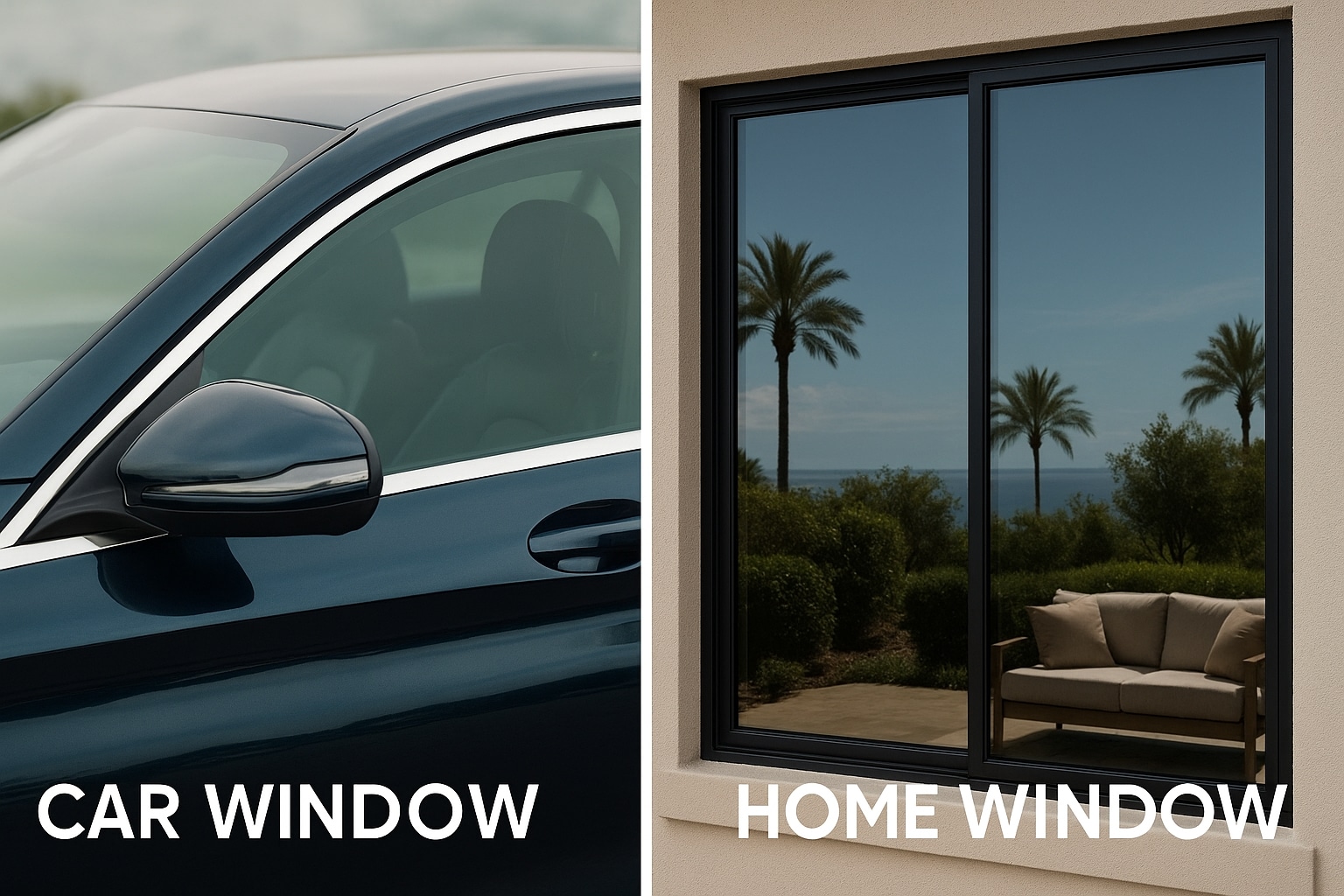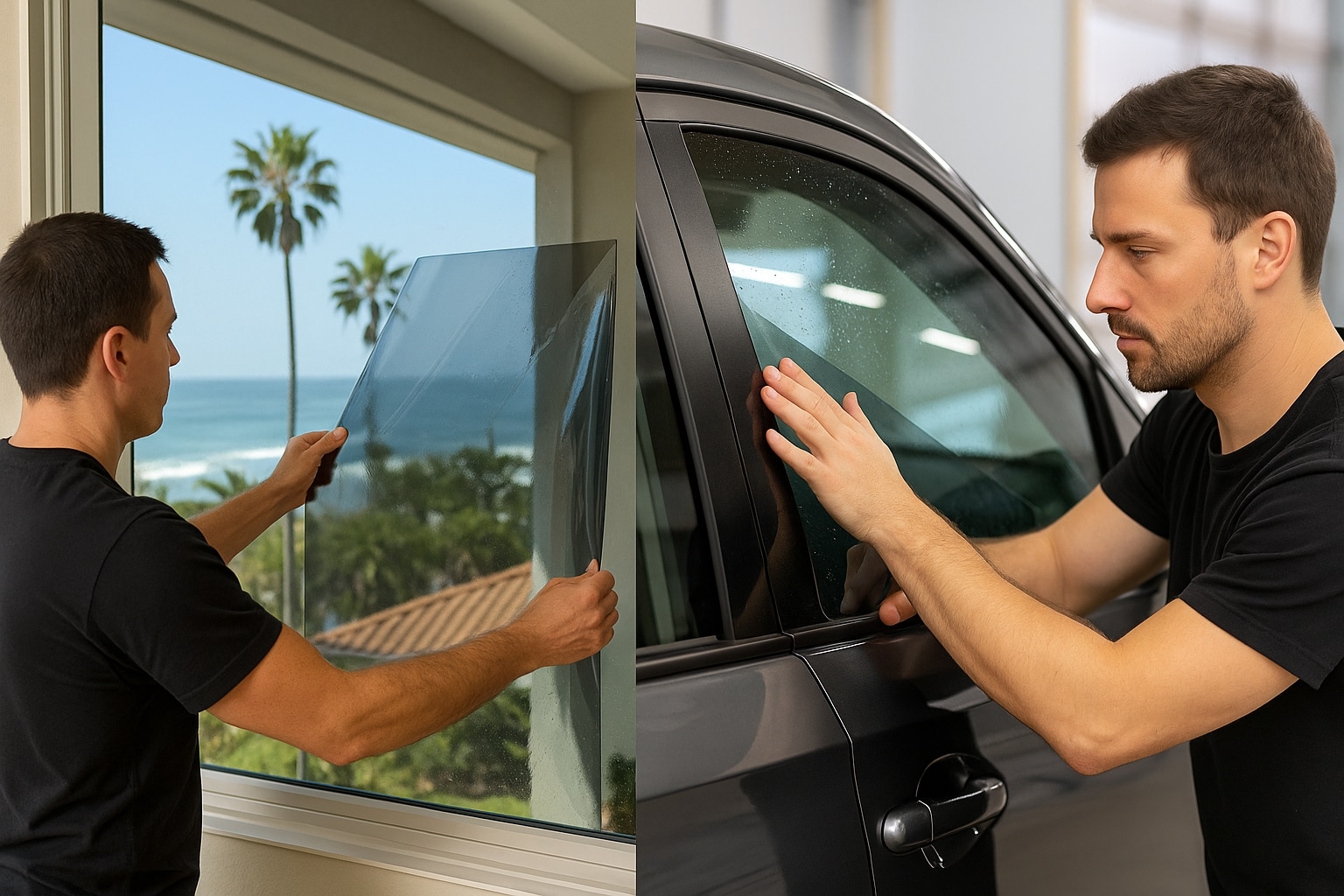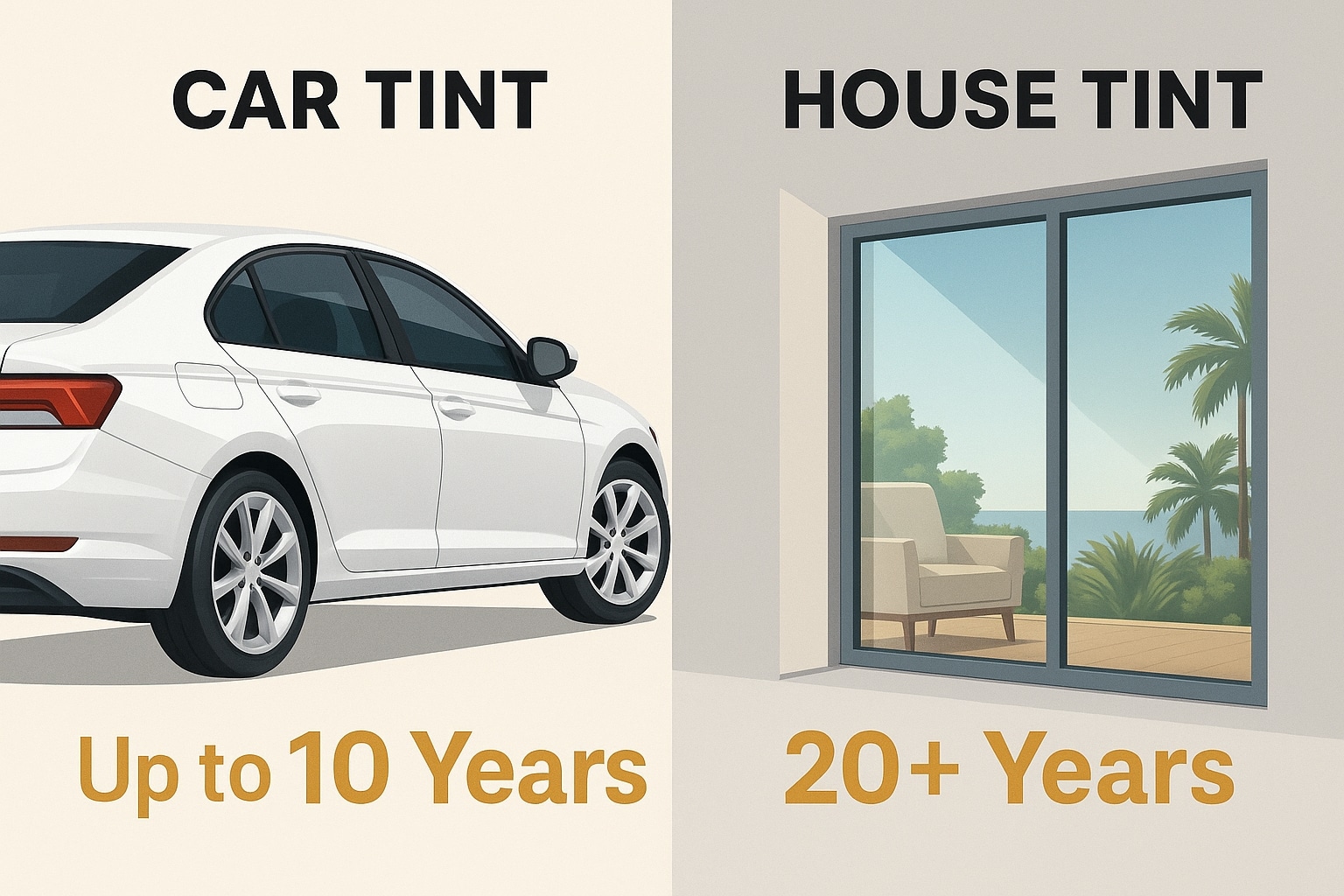Window tinting is no longer just a style choice—it’s a practical solution for comfort, privacy, and energy efficiency. While many San Diego residents are familiar with auto window tinting, fewer understand how residential window tinting differs. Both serve to block heat, UV rays, and glare, but the applications, film types, and installation processes for a window tint house versus a car are surprisingly different.
This guide explains the major differences between house and car window tinting so homeowners in Southern California can make the best decision for their properties.

Purpose and Benefits: Cars vs. Homes
Car Window Tint:
Primarily designed to improve driver comfort and safety. Car films focus on glare reduction, UV protection, heat rejection, and privacy. They also add an element of style, which is often a key motivator for car owners.
House Window Tint:
Residential films focus more on long-term energy savings, interior protection, and home comfort. In sunny regions like San Diego, homeowners benefit from reduced cooling costs, UV protection for furniture, and less glare on TVs and computer screens.
While both reduce sun exposure, residential tints are tailored for efficiency and comfort over the long haul.
Types of Window Films Used
Automotive Tint:
- Dyed Films: Budget-friendly, mainly for aesthetics.
- Metalized Films: Effective heat rejection but may interfere with electronic signals.
- Ceramic Films: High-performance, signal-friendly, and increasingly popular.
Residential Tint:
- Solar Control Films: Reduce heat, glare, and UV exposure while allowing natural light.
- Decorative Films: Frosted or patterned designs for privacy and aesthetics.
- Security Films: Thicker films that strengthen glass against impacts and break-ins.
- Nano-Ceramic Films: The premium choice, offering superior clarity, durability, and solar rejection without reflective shine.
The key difference? Home films are designed for larger, flat panes of glass and long-term durability in fixed structures.

Installation Techniques
Automotive Tint Installation:
Installing tint on cars requires precision with curved glass, tight edges, and rubber window seals. Installers use heat guns to mold the film to a vehicle’s unique contours. It’s a meticulous job since even minor imperfections can affect visibility.
Residential Tint Installation:
House windows are typically larger and flatter, making installation less about curves and more about precision with expansive surfaces. The process involves cleaning the glass thoroughly, applying the film with a slip solution, and using squeegees to eliminate bubbles. The challenge lies in handling large sheets of film and ensuring no dust or debris gets trapped.
In short: car tinting is more about curves, while house tinting is about scale.
Longevity and Durability
Car Tint:
Even high-quality car tints face harsher conditions—constant vibration, road debris, rolling windows, and extreme temperature swings. While premium films can last 10+ years, cheaper options may fade or bubble within 3–5 years.
House Tint:
Residential films typically last longer since they don’t endure the same physical stresses. High-grade films can last 20–25 years when professionally installed. Many manufacturers offer extended warranties for residential applications, making it a longer-term investment.

Legal and Regulatory Differences
Automotive Tint Laws:
California has strict regulations on how dark auto tints can be, especially for front windows. Violating tint laws can result in fines and forced removal.
Residential Tinting:
There are fewer legal restrictions for homes. However, some homeowners’ associations (HOAs) in Southern California may regulate reflective films or aesthetics. Always check HOA guidelines before installation.
The takeaway: cars are heavily regulated, homes are more flexible.
Cost Considerations
Car Tint Costs:
Pricing depends on vehicle size, number of windows, and film type. In San Diego, car tinting generally ranges from $200–$800, with premium ceramic films at the higher end.
House Tint Costs:
Costs depend on square footage, film type, and installation complexity. Average residential installations in Southern California range from $6–$15 per square foot. While the upfront investment may be higher, the long-term energy savings often outweigh the cost.
For homeowners, residential tint is more of an energy-efficiency upgrade than a style accessory.
Conclusion
While car and home window tinting share similar technology, their applications and benefits are quite different. Window tint house installations focus on energy savings, UV protection, and long-term comfort, while car tinting emphasizes driving safety, privacy, and style.
For San Diego homeowners, residential window tinting is one of the smartest upgrades available—protecting interiors, reducing energy costs, and enhancing everyday comfort. Whether for your vehicle or your home, investing in quality film and professional installation ensures the best results.

